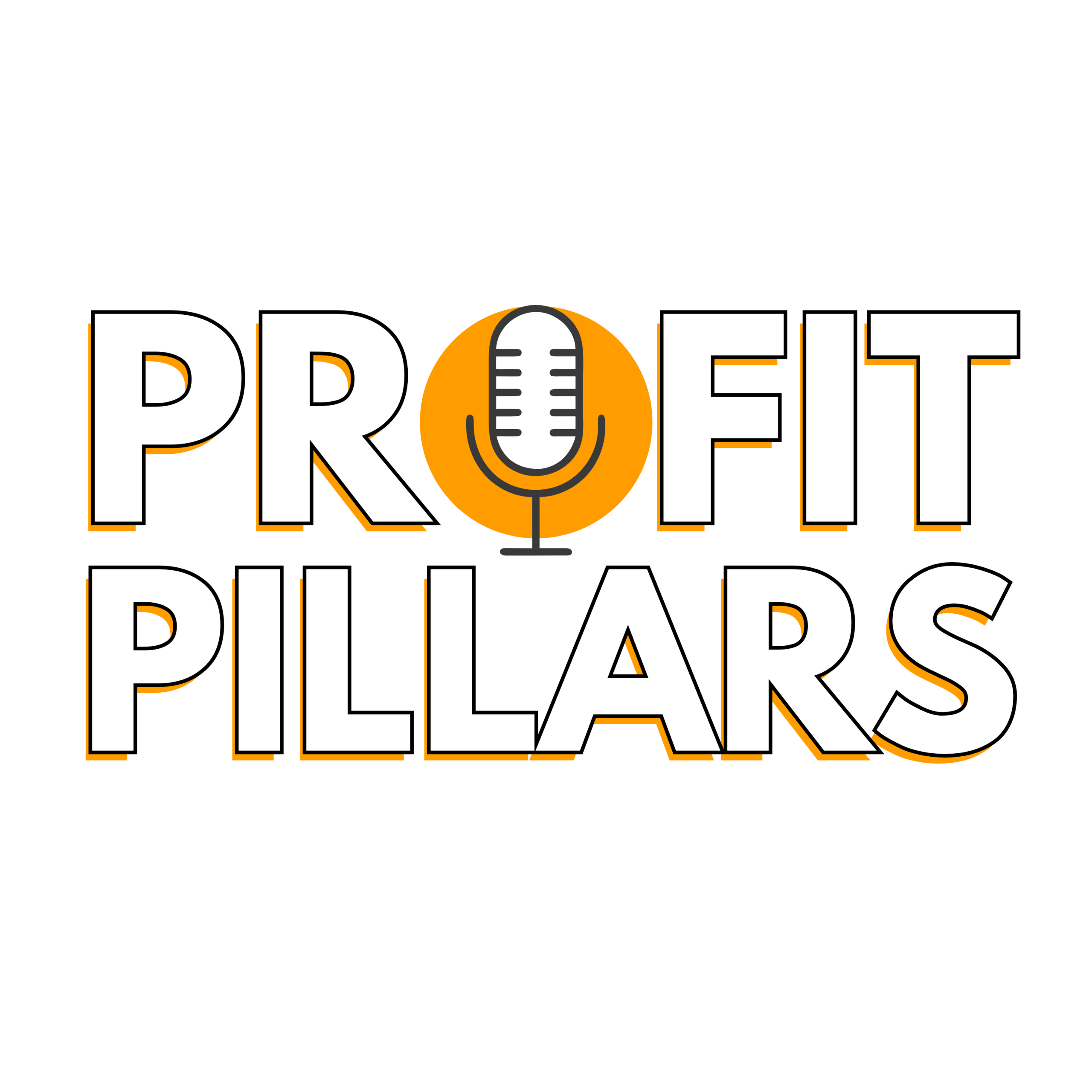What Is a Healthy Profit Margin for Digital Creators and Online Businesses?
SUBSCRIBE TODAY
Episode Summary
In this episode of The Profit Pillars Show, Parker Stevenson, CEO of Evolved Finance and author of Profit Pillars, breaks down what a healthy profit margin looks like for digital creators and online businesses, and why this metric is more reliable than revenue alone when measuring the health of your business.
He starts by clarifying what counts as a digital creator or online business, then shares the profit margin benchmarks we recommend after working with hundreds of entrepreneurs in this space. For many online businesses, a healthy profit margin typically falls in the 30–40% range, though it can be higher for leaner operations and lower when you’re investing heavily in growth. Parker explains how margins tend to shift over time, with early-stage businesses often enjoying higher percentages because of low overhead, and more established businesses seeing somewhat slimmer margins as they build teams and scale.
From there, Parker dives into how to track profitability effectively, and why looking at both percentages and actual dollar amounts is important for making smart decisions. He also shares why cutting expenses isn’t always the best path to better margins. He explains that in many cases, temporarily accepting lower profitability to invest in marketing, systems, or team members can lead to much stronger results down the road.
Throughout the conversation, Parker highlights the most common expenses that chip away at margins for online entrepreneurs, such as software, contractors, and advertising. He emphasizes that profitability is a balancing act between pricing, packaging, and expense management and that comparing your numbers directly to someone else’s without understanding their business model, stage, or goals is a quick way to get misled.
By the end of this episode, you’ll know what healthy margins look like for your stage of business, how to track them, and how to use this insight to make more confident, strategic decisions that keep your business profitable and sustainable over the long term.
Important links from this episode:
Profit Pillars Book: evolvedfinance.com/book
Evolved Finance Services: evolvedfinance.com/services
Finance Tools and Courses: evolvedfinance.com/learn
Frequently Asked Questions
Here are a few common questions business owners ask around this topic:
A profit margin is the percentage of revenue your business keeps after paying all expenses. You calculate it by dividing net profit by total revenue and multiplying by 100. For example, if you make $100,000 and spend $60,000, your margin is 40%. This matters because profit margin shows how efficiently your business turns sales into actual profit. A higher margin usually means your business is more sustainable, resilient, and able to reinvest in growth. In other words, it’s not just about how much money comes in, it’s about how much you actually keep.
For many digital creators and online businesses, a healthy profit margin falls between 30% and 40%. That said, it depends on your business model and stage of growth. A lean solo creator may run at 50% or higher, while a business building a team or investing in paid ads may run closer to 20–30% for a season. The “healthy” margin is the one that allows you to pay yourself well, cover expenses, and still have room to reinvest without constant financial stress.
Profit margins vary because every business model has different costs and strategies. For instance, a digital product creator with little overhead might keep 50% or more, while an online education business with a team, ads, and production expenses might land closer to 30% and still be very healthy. Things like pricing, team size, marketing strategy, and reinvestment decisions all play a role in where your margin lands.
The best way to improve your profit margin is to be intentional with pricing and expenses. That could mean raising your prices to better match the value you deliver, streamlining operations, or improving efficiency in how you deliver your offers. What you don’t want to do is slash expenses across the board. Cutting the wrong things can stunt growth or lower the quality of your work. The goal is to adjust strategically so both your revenue and profitability grow together.
Yes. It can make sense to intentionally lower your profit margin when you’re making growth-focused investments, such as hiring a team member, upgrading systems, or running a large-scale marketing campaign. The important part is making those decisions with a clear plan for how the investment will increase future profitability. A short-term dip is fine if it positions you for stronger profitability down the road.
The simplest method is to review your monthly profit and loss statement and calculate your profit margin by dividing net profit by total revenue. Tracking it regularly helps you spot trends, evaluate the impact of changes, and stay aligned with your financial goals. Looking at both the percentage and the dollar amount will give you a clearer picture of how your business is performing.
More recent episodes
Can Business Owners Trust Virtual Accounting Teams?
- October 22, 2025
What Should a Bookkeeper Be Doing for Your Online Business?
- October 15, 2025
How to Build a Financial Forecast for a Coaching Business.
- September 24, 2025
Our Services
Learn more about our bookkeeping and tax services
The Profit Pillars Show
The Profit Pillars Show by Evolved Finance gives online entrepreneurs and modern small business owners the real-world guidance and insights they wish they had sooner. Each episode delivers actionable, straight-to-the-point advice on finances, operations, and overall business strategy, drawn from host Parker Stevenson’s years of experience helping entrepreneurs build stronger, more profitable businesses.

